Learning how to use a circular saw safely and effectively gives you a useful and interesting hobby. The circular saw is a sophisticated and effective instrument, which will help you build a range of beautiful products, from shelves to pieces of art. For novices, a circular saw might seem more complicated and less comfortable compared to a jigsaw, but don’t worry! We will help you learn how to cut confidently, safely, and enjoy your skills.
[the_ad_placement id=”in-text-1-type-r”]First, let’s see what is a circular saw. It’s actually a blade with a safety guard around it, powered by the an engine, that creates a circular motion to cut. Roughly, circular saws can be divided into two types, sidewinder and worm-drive saw. The sidewinder has a compact shape and the motor is located along the blade.
Due to its smaller size, this type of saw is less powerful in comparison with larger models. For the same reason, it is less durable so, if you are picking up an instrument for heavy usage, this is not the type you need. Buy a sidewinder in the case you need a lightweight and simple instrument for occasional usage.
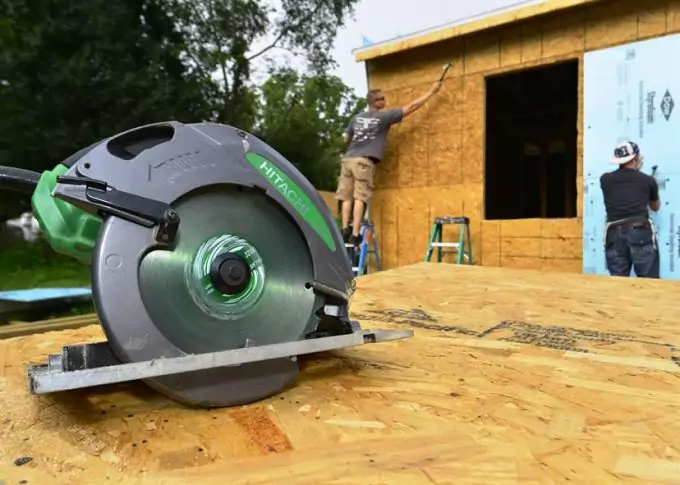
The worm-drive saw is larger and the motor is situated behind the blade. This saw can handle tough materials without overheating. Overheating must be avoided for safety reasons – when the saw slows down during a tough job and heats up, the blade gets dull quickly and the cut quality decreases dramatically. In the end, the blade may kick back and hurt you.
Quick start checklist
Is this is the first time you are going to do woodwork? If so, it means that you don’t have the necessary tools yet. We recommend trying a universal, affordable tool that feels comfortable in your hands. It will help you get some experience and then you will be able to select a specific model or models based on your own needs and requirements.
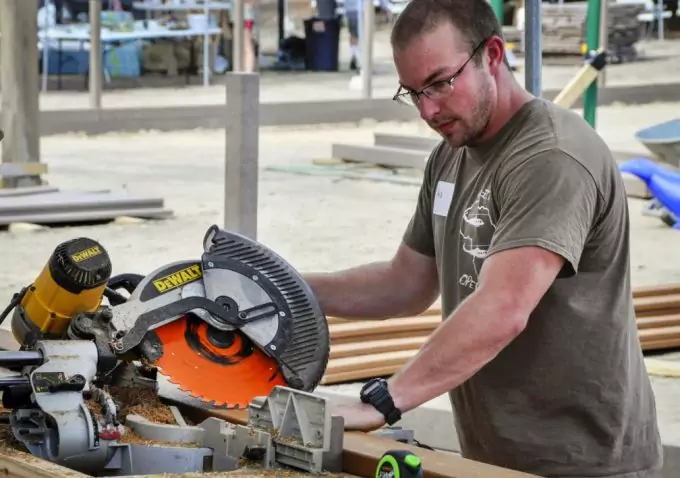
When you are a novice, it’s best to start with simple woodwork and proceed to more complicated tasks when you feel more confident. Once you have your tool at hand and you are ready to start, the best way to overcome your fear is to perform a few test runs just to feel how it goes. After that, you can proceed to your first job.
It is very important to follow the safety rules when using a circular saw, so here is a small checklist for you to go through:
- There are two critical points that you should keep in mind – safety and safety. Although modern saws are designed to be compact and safe, this is still an instrument, which requires your full attention.
- Before each use, inspect the saw to make sure it is not damaged. Make a security check of the blade and replace it if you see any broken or chipped teeth.
- Inspect the cord and please do not forget to unplug it before making any operations on the blade like cleaning or replacement.
- The quality and speed of the cut depend on the condition of the blade. For better results, make sure that the blade extends less than ¼ inches past the edge of the board. Setting the blade too deep may force the saw bind and kick back.
- Never use a rusty or damaged blade! The selection of the blade is important and you will find more information on how to select a good blade for your woodworking below.
- Check if your blade is sharp enough and sharpen it if necessary. A sharp blade is safer and it works more effectively. On the other hand, a dull blade might bind to wood and overheat.
- Make sure that blade is seated properly and that the safety guard moves easily to cover the blade when it is not used.
- Make sure you put the saw in safe position. There is no strict rule regarding the cut direction but you should keep the saw motor facing towards the larger part of the board – this will provide the best support for the saw plate.
- Ensure that the blade is rotated correctly.
- Check your sheet or board for nails or knots before cutting.
- Remove all cords from the cutting area and make sure they are not damaged.
- Put on a face shield or safety glasses to protect your skin and eyes from damage.
- Long sleeves in addition to gloves (gloves are necessary) will give your hands extra protection.
- There is a risk of inhaling dust so wearing a respirator or mask may be useful.
- You can consider hearing protection as well as some jobs may be not that quiet.
Don’t forget safety! See our article on the best first aid kit to be prepared for anything.
Tips and tricks that help achieving the best results
When you gained some experience, and you are good enough to proceed to more complicated and sophisticated work, it’s time to start learning secrets that will help you enhance your skills and create masterpieces of wooden art. For a confident master, a good circular saw can go through any material – foam, plywood, PVC. With a diamond blade you can even cut through stone! Circular saws can be set for compound or bevel cut and they even can replace a table saw on many jobs.
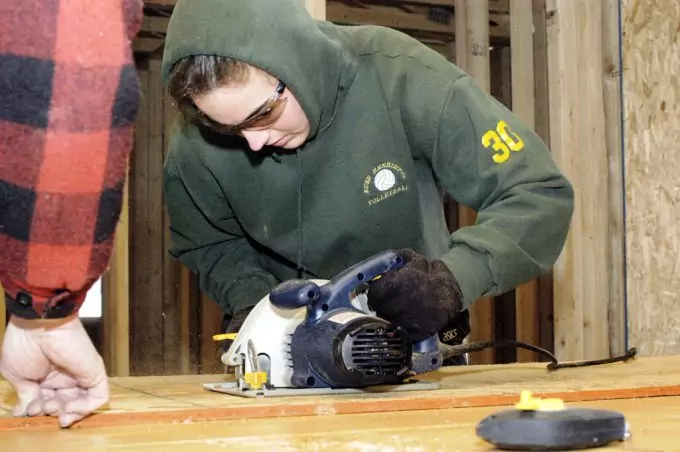
Here are a few tips and tricks to keep in mind:
- Start over if you missed the cutting line. Don’t try to get back to the line as this it will be difficult, especially if you are a beginner. Withdraw the blade and start again. After a few attempts, you will cut nice straight lines without much effort.
- Do not use sawhorses when cutting heavy boards – with heavy pieces it is easier to cut when they lie instead of cutting on sawhorses. Place the board on your toe and lean on it, but make sure that you are cutting at more than 10 inches from your toe.
- Avoid pinching – for cutting sheets, it is necessary to provide support to prevent from kickback, which usually occurs if the saw blade gets bound in the cut. When cutting on sawhorses, make sure to position the saw outside of the sawhorse pair. Position the board or sheet so that the longer part does not fall when cut away.
- Keep cutting at a safe level and avoid cutting at a level higher than your chest. Otherwise, you won’t be able to hold the saw safely. For tasks that require cutting at a higher level, you need to pick up a handsaw.
- Beware of splintering – this may occur on the top surface of the board or sheet, and it can be unpleasant if you handle expensive woods. To avoid it, place the board with the visible surface down. This way, in this case if splintering occurs, it will affect the backside. You can also score a cut line with the help of utility knife – it will help you make a smooth cut. For a nicer look, support the board all the way, so you won’t allow for the falling piece to draw a sliver of wood.
- Cut the same pieces together – when you need to cut multiple pieces of the same size, put sheets on top of each other and make sure that all the edges are aligned. Then hold or fix the stack tight to prevent swinging and cut through all sheets at the same time.
- When you need to cut a straight line, you can use a metal ruler or a strip of wood as a guide
Important features when selecting the right blade
If you are a beginner, and do not have the guidance of an expert in circular saws, selecting the right blade may be a bit difficult. There are different types of saw blades designed for different materials, types of cut and for saws of different power. So, one of the most important features when selecting, is the blade diameter and type. You just need to make sure that it is compatible with your circular saw model.
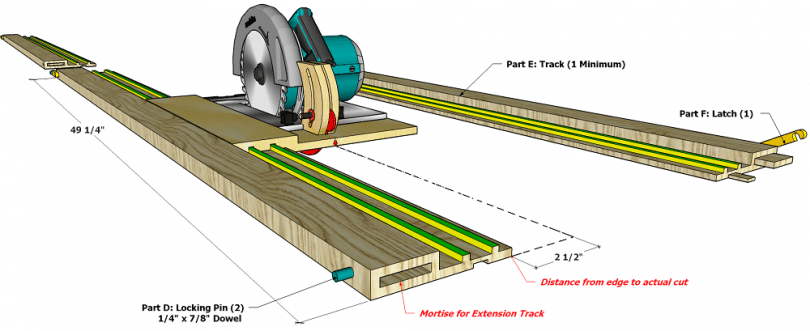
Here is a short guideline that will help you find the right blade:
- Handheld saws accept blades of a smaller diameter, usually 4 to 7 inches;
- a tile saw will require a diamond blade with 7-10 inch diameter;
- table saws require 10 or 12 inches and blades for table saw should be carbide-tipped;
- saws for cutting metal usually use 14-inches blade.
Another important feature is the RPM (or rotation per minute). For example, smaller blades have higher RPM while larger ones have lower RPM. The recommended RPM of the saw should be lower than the RPM recommended for the blade. Please note that the RPM of the saw does not directly indicate its cutting speed, so a higher RPM does not mean you will cut faster.
[the_ad_placement id=”in-text-2-type-r”]The blade diameter will affect the speed because the cutting edge of the larger blade will be moving faster compared to cutting edge of the smaller blade since it is covering a greater amount of distance at the same time. On the other side, do not hurry to pick up a larger blade, because you have to consider the desired quality of cut as well. So, when you are looking for the appropriate RPM indicator please consider the material you are going to work on.
For this, you will need to calculate the SFM figure, which is ‘Surface Feet per Minute’. The formula is as follows:
SFM = (diameter/12)*Õ*RPM
For wood material you will usually need and SFM of about 5000 to 8000 while for metals it will be less than 1000.
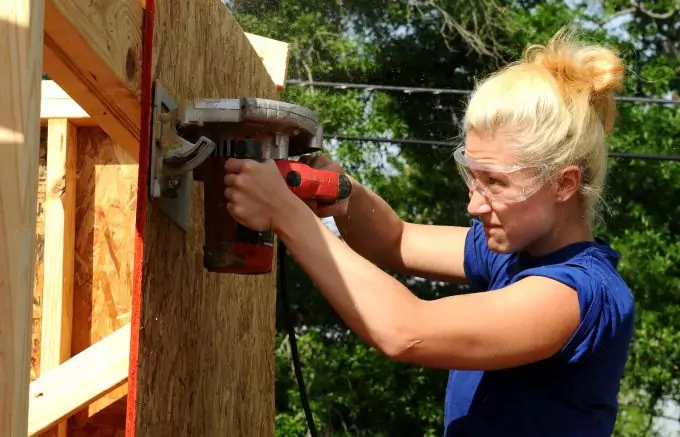
Also, pay attention to the cut line indicator when you are selecting a tool. This is designed to help you see where your blade goes while you are cutting. Without it, it will be more challenging for you to cut a straight line. The cut indicator can usually be found on the baseplate and it looks like two small notches. However, there are some cases when you are won’t be able to see the cut indicator. For such cases a small window that shows you where the blade is would be useful, so look for it. Do not hesitate to grab the tool and check if it feels convenient.
Next, take a look at the baseplate. What material is it made from? Magnesium baseplates are tougher but they can break if you drop the saw. On the other hand, a baseplate made from aluminum might bend when you need the most while plastic baseplates are tough and shock resistant.
Regardless of the material, the baseplate must be flat across its whole length and width and it should have a straight edge. In the end, take a quick glance at the guard. The guards with sharp or rough edges may get stuck on wooden surfaces during the cut and you will have a hard time lifting it up.
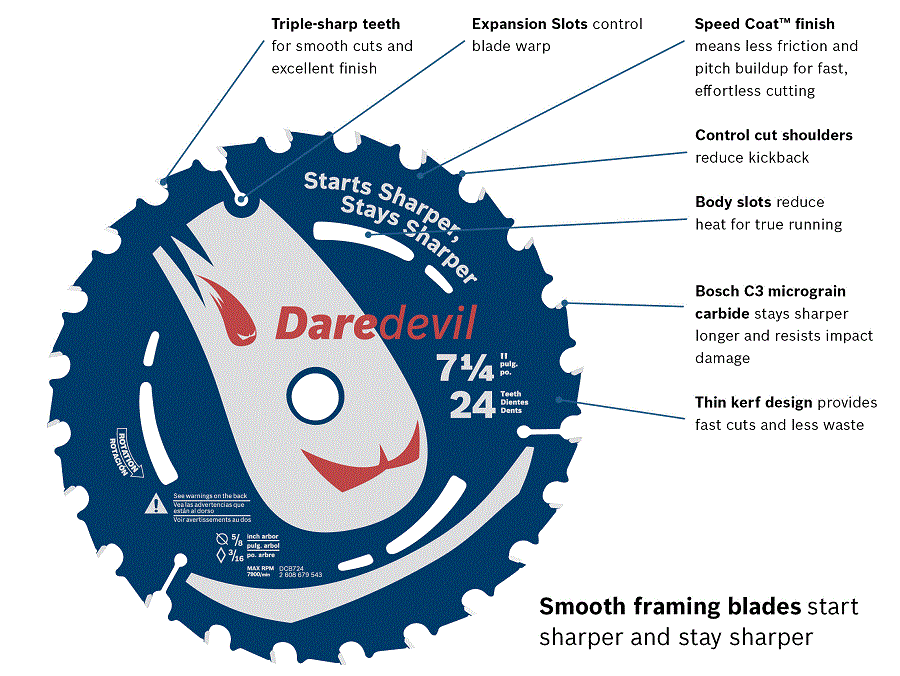
When it comes to what you are going to cut, you also must pay attention at the type of blade. Different types of material work best with different types of blades. For example, there are blades designed to cut wood, plastic and acrylic, metal, and multi-materials. Here are a few types that you might need:
- Rip cut is cutting along the grain of wood; accordingly, the rip-cut blades are designed to cut along the grain – these blades have a lower number of teeth specially shaped to cut aggressively;
- The crosscut blade is for cutting across the grain and has about 40 to 80 teeth that are designed to provide a clean cut;
- Combination blades are used to make both cross and rip cuts as they have groups of teeth separated by gullets.
Since the teeth perform the cut more than the disk itself, you have to mind their shape and number. This is another aspect of the blade that will impact your cutting work. The greater the number of teeth, the more accurate the cut will be. Also, the shape of teeth defines the quality of your cut. For instance, the alternate top bevel type is good for fast cuts of rough wood that come across or along the grain. Multi-material blades are good for cross cut and radial-arm blades have a negative angle to avoid self-feeding.
How to take care of your blade
No matter the type of blade you chose, it will require appropriate care to provide you with accurate result and allow you to work safely. Here are a few rules to follow:
- To protect the teeth from chipping or breaking you should try to avoid contact while the blade is in storage.
- Sharpen the blade regularly and ideally, you should have an extra blade at hand to make sure you can replace a dull blade immediately when needed.
- When you are doing woodwork, always place your saw on a flat surface between cuts; never put it into dirt.
- Never take out a running saw from the board and never try to back it up while running. Always stop the blade before lifting it up.
Cleaning is very important for keeping the blade in good condition and award it a longer life. Please do not use any aggressive materials for cleaning, such as metal brush or steel scraper. Blades endure tremendous force and using materials like that can compromise the blade’s integrity. If necessary, better use plastic cleaners, or a brass-bristled brush.

Image credit: blade.camjobs.us
Why is cleaning so important? In the case of a saw blade, this is not just a question of hygiene. When in use, the blade is contaminated with pieces of sap, pitch, dirt and dust, which cling to the blade’s body. If not removed, they add more friction, which, in turn, makes the blade heat easier during usage. Also, dirty blades get cold slower which leads to quicker dulling and, eventually, blade distortion.
[the_ad_placement id=”in-text-3-type-r”]Please keep in mind that even the dullest blade would be sharp enough to cut human flesh so take all appropriate measures during cleaning.
Useful cleaning products
To clean the blade effectively and safely, you may consider a special fluid designed for cleaning blades. You can also try a household cleaner (those that are not aggressive) but for extreme impurities, it might not be enough or may require additional scrubbing.
For scrubbing, use a cleaning pad made from nylon. If you are the happy owner of a coated blade, please always make sure that your cleaning product and cleaning material are friendly towards the blade coat. No matter if you use a spray cleaner, or liquid, or even just water and soap, it is very important to wipe dry the blade after cleaning. And, of course, the last important parameter of cleaning is regularity. It will help you keep your blade sharp and safe for a longer time.
Among other instruments in your workshop, the circular saw is not the easiest one but it’s tough, inexpensive and it can be used for a variety of applications. It will take you some time to get the experience and confidence of a master, but in the end, the circular saw will become one of your devoted helpers in woodworking. From plywood to stone, no material will be impossible for you. Follow the safety rules and woodworking will become your favorite hobby.
Check out our article reviews of the best circular saw to give you more options.






NEVER hold the blade guard open – the main function of this feature is to snap back over the edge in case of kickback – HOPEFULLY – in the brief moment before the saw hits your thigh. To prevent kickback, spend a couple of more dollars and get a saw with a riving blade. The expense is justified, despite all the trouble; the arteries in your legs will drain you out before help arrives if the blade guard does not work.
We provide you with the most comprehensive checklist to help you make the best purchase, a saw that will not result in any kickback.
Very useful tool, but needs to be used properly.
I like that you mention proper maintenance and constant upkeep because it is crucial. Most incidents happen when the blade gets stuck, and in order to prevent that constant maintenance is needed.
Proper maintenance and constant upkeep are some of the most important techniques to consider.